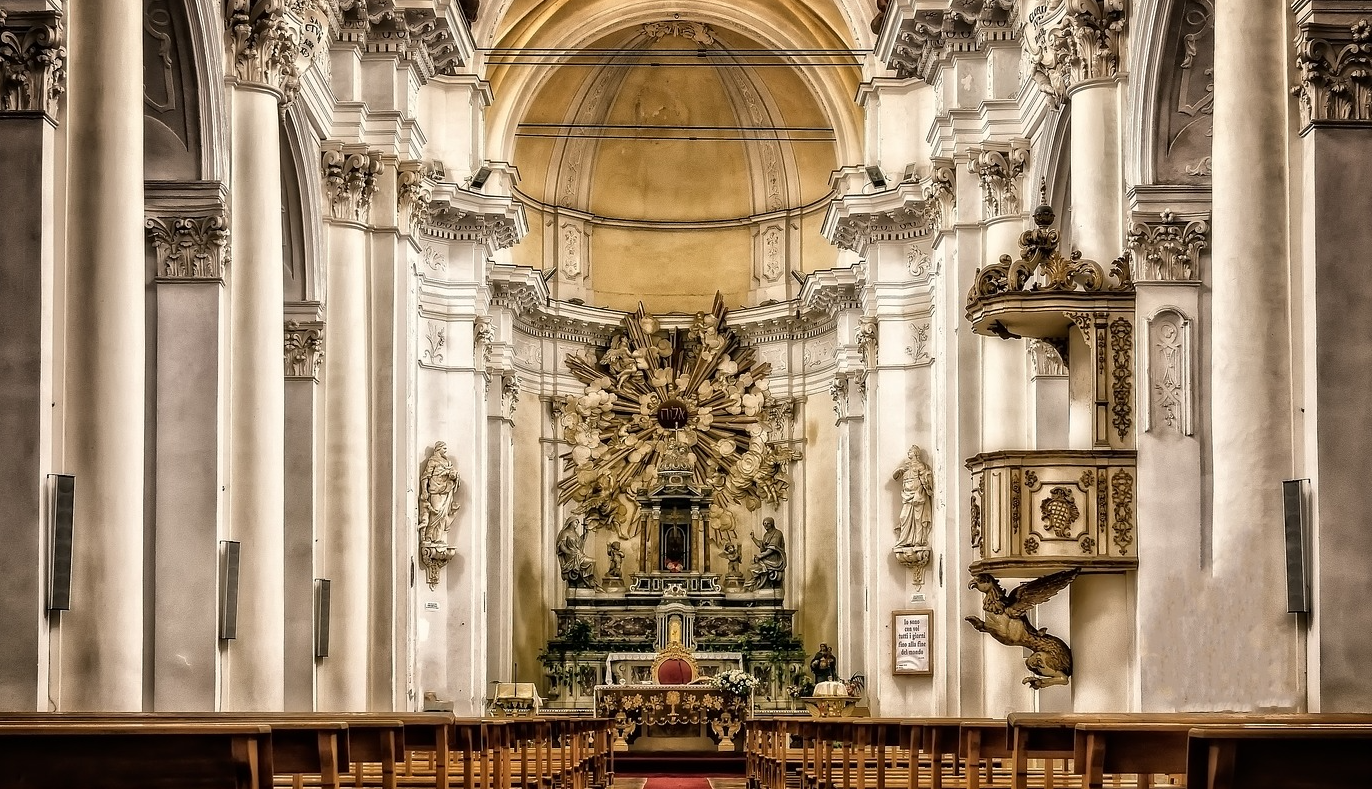Protecting Faith-Based Communities, Part 2
Part 2 of 2.

This is the final part in a two-part series. The first article, “Protecting Faith-Based Communities” is available here.
There are many resources, techniques and practices that are no-cost or low-cost that houses of worship and faith-based communities can employ to protect their staff, community and their infrastructure.
The Cybersecurity and Infrastructure Security Agency (CISA), for instance, promotes techniques such as Crime Prevention Through Environmental Design (CPTED). “We try to leverage low-cost, no-cost measures that they can implement. For example, if they have a concern of vehicle ramming, yet they don’t want to invest in any devices to prevent the main entrance from being breached, we advise them to utilize the vehicles of ushers, greeters, or staff that come early before services start to park vehicles to block certain entries,” says Scott Breor, Associate Director within CISA’s Infrastructure Security Leadership Division team.
“They can also establish policies to lock most doors except the main entrance. Once the service starts, they can lock the main entrance,” notes Breor. “In the event of an active shooter scenario, there should be proper education of exits and other signage. However, they want to train for those events, whether that is communication through a flyer or if they want to invite congregants to participate in an active shooter training event. By doing that, they prepare all members for any possible event that might ensue, and those practices are low-cost and no-cost.”
“Houses of worship that are looking to maximize their security do not have to spend thousands on video surveillance or other technology, unless that technology can be integrated easily with other solutions,” says Breor. “Technology is beneficial, but there are also low-cost and no-cost methods that can help, as well.”
Training is a critical part of any emergency, says Patrick Fiel, a national security consultant. “Being proactive and seeking out preventive measures are the best ways to protect a house of worship and its congregation. Training could be all the difference in a life-altering situation. I recommend leadership, staff and security teams be trained for all types of emergencies, especially for active shooters. During training, I would recommend working with their local emergency responders.”
Bob Chauncey, Church Safety Security Consultant and Public Safety Chaplain, advocates for Homeland’s Security campaign, “If You See Something, Say Something®”. “In the church, if the greeters, ushers and other staff, see something, they need to say something to the security team so that they can investigate and assess the threats and recommend how to proceed,” he notes.
Another low-cost measure is posting signs and decals around the perimeter and the building, says Chauncey. “These are low-cost ways of deterring criminals from causing problems.”
In addition, a few cameras and technology could make a difference, says Chauncey. “Finding a system that can work with your needs and your resources is key. They can provide you with a system that is inexpensive, but works for what you need it to. You can set cameras to monitor the perimeter, and anyone viewing the live footage, they can prevent many things: arson, break-ins, or any crime against a church. Investing in a small amount of systems can be beneficial,”
Finally, Chauncey advises every house of worship to perform a risk review, which may come at no-cost or at low-cost, he says. “A risk review from an experienced consultant will help identify what areas need to be secure, how those areas can be secured, and provide advice on best practices and procedures to implement to ensure the safety of staff and congregants,” he says. Just as critical is to develop a plan based on the risk review, he says.
From a safety perspective, houses of worship and congregants should always train for medical emergencies with CPR and “Stop the Bleed,” says Chauncey. “We had a Stop the Bleed class at a church recently, and it wasn’t a standard one-hour class,” he notes. “We did tactical first-aid with representatives from the police department and other emergency medical services (EMS) individuals. It was a hands-on and very messy, Stop the Bleed by plugging the wound and dressing it. A lot of houses of worship are starting to recognize the need to implement classes and training sessions such as Stop the Bleed due to recent active shooter incidents.”
Chauncey notes it is important to have partnerships and perform drills with local law enforcement, local hospitals and first responders to help all members of the houses of worships be prepared for any situation that might take place, even if the trainings may be unconventional.
Houses of worship may also benefit from CISA’s Protective Security Advisor (PSA) Program, operated by CISA’s Infrastructure Security Division. PSAs are trained critical infrastructure protection and vulnerability mitigating subject matter experts who conduct a free safety and vulnerability assessments, and security planning for houses of worship. The PSA Program includes Regional Directors (RDs) and PSAs serving in 73 districts in 50 states and Puerto Rico.
Another resource for houses of worship is the Faith-Based Information Sharing & Analysis Organization (FB-ISAO), which provides members with information (at no cost), analysis and capabilities to help reduce risk while enhancing preparedness, security and resilience. Among those services is a periodic education on understanding and addressing the threat of hostile events. FB-ISAO works with CISA, as well, in providing resources that assist in securing physical and cyber infrastructure.
Recommended Lockdown and Evacuation Procedures
Breor strongly recommends CISA and the Federal Emergency Management Agency (FEMA)’s guide, Developing High Quality Emergency Operations for Houses of Worship, which helps houses of worship, and other critical assets, on how to plan to prevent, protect against, mitigate the impact of and recover from any emergency. It outlines approaches such as walking through different emergency scenarios to create a course of action for each objective the security team is trying to accomplish.
The guide, Developing High Quality Emergency Operation Plans for Houses of Worship, stresses that successful planning requires all stakeholders –community partners like local law enforcement, fire officials, EMS and emergency management staff – be engaged in the planning process from the start.
“All houses of worship should have lockdown and evacuation procedures in place. That being said, those plans should be developed with local law enforcement, as they will be responding to any incident and you always want to plan with them, so officers are well-acquainted with the facility,”
According to the CISA and FEMA’s guide, there are different evacuation and lockdown procedures that houses of worship should focus on:
- Evacuation procedures focus on the courses of action that the house of worship will execute to evacuate buildings and grounds. When developing goals, objectives and courses of action, a team should consider:
- Where to post key information throughout the building so that congregants are familiar with and have easy information to evacuation routes.
- How to safely move persons to designated assembly areas from buildings and outside areas.
- How to evacuate when the primary route evacuation route is unusable.
- How to evacuate children who are not with a parent or guardian.
- How to evacuate senior citizens and individuals with disabilities and others with access and functional needs, including language, transportation and medical needs.
- Lockdown procedures focus on the courses of action that the house of worship will execute to secure buildings and grounds during incidents that pose immediate dangers in or around the building. When developing goals, objectives and courses of action, a team should consider:
- How to lock all exterior doors
- How particular building characteristics, such as windows or doors, affect possible lockdown procedures
- How to proceed when a threat materializes inside the house of worship
- When to use different variations of a lockdown, such as when outside activities are curtailed, doors are locked and visitors closely monitored.
It’s important to note other procedures such as planning for:
- A shelter-in-place, which focuses on courses of action when persons are required to remain indoors because it is safer.
- A recovery annex where people can recover from an emergency or incident.
- A security annex, which focuses on courses of action that the house of worship will implement on a routine, ongoing basis to secure against criminal threats.
“There is no single response that can apply to all facilities, as they all have different needs,” notes Breor. “Knowing there are facilities with all types of needs and resources, we recommend they also train on Run-Hide-Fight:
Run
If it is safe to do so, the first course of action is to run until in a safe location. Procedures are:
- Leave your personal belongings behind
- Focus on running and finding the escape routes.
- Avoid escalators and elevators
- Take others with you, if you can
- Only call 911 when it’s safe to do so.
Hide
If running is not a safe option, hide in a safe place. Procedures are:
- Lock the room.
- If the room doesn’t have a lock, try to barricade.
- If the lights are on, turn them off.
- Remain in silence. Silence any electronic devices.
- Remain in place until given an all clear by identifiable law enforcement.
Fight
If running or hiding aren’t an option, look at your surroundings for tools you can use, such as a fire extinguisher, a chair, or improve with anything that could be used as a weapon to disrupt or incapacitate the shooter or attacker.
Overall, both Fiel and Chauncey agree houses of worship should employ security personnel and other services to monitor any threats. “I do recommend working with the sheriff’s department or local law enforcement to have a full-time deputy sheriff or police officer in uniform with a vehicle assigned during all service hours. Or, consider hiring off-duty law enforcement officers. I have also worked with churches that have their own security teams that are both armed and unarmed. We must continue making progress in protecting our churches and places of worship,” says Fiel.
Chauncey recommends having security personnel who will be monitoring children, seniors and those who have disabilities, he says. “They are among the most vulnerable, and they need help either evacuating or help get to areas where they will be safe.”
What initiatives and programs has your house of worship recently implemented? Feel free to email me at henriquezm@bnpmedia.com for any comments.
Looking for a reprint of this article?
From high-res PDFs to custom plaques, order your copy today!





